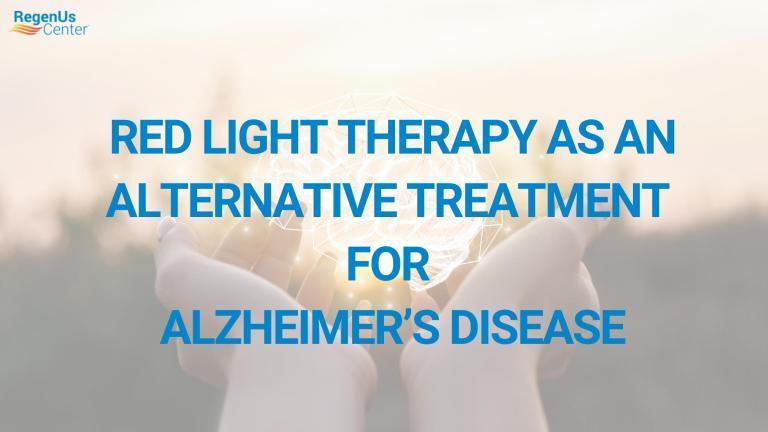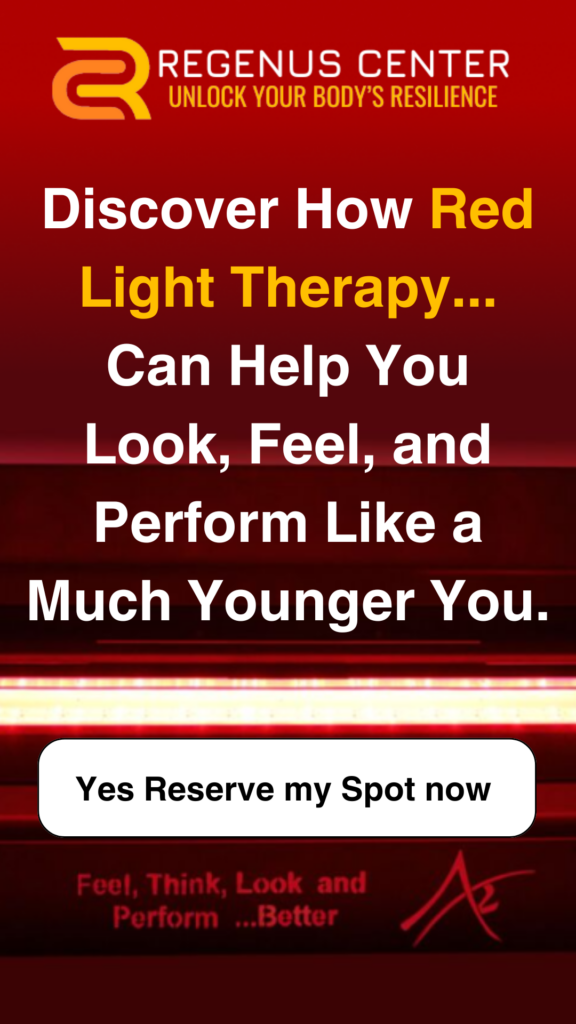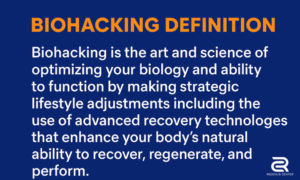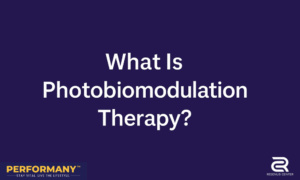Chances are good that you know someone suffering from Alzheimer’s disease, which affects 5.8 million Americans and is the 6th leading cause of death nationwide. If you have been looking for an alternative way to help them, you are in luck. Based on research Red light therapy, which is also known as photobiomodulation (PBM) or low-level light therapy (LLLT) offered at Regenus Center in Florham Park, NJ, is a different type of approach for treating Alzheimer’s.
It works at the cellular level, targeting potential causes or contributing factors, which may lead to a reduction of symptoms.
IS ALZHEIMER’S CURABLE?
Alzheimer’s treatments typically focus on helping patients maintain mental function, while managing behavioral changes and slowing the progression of the disease. It is very common for Alzheimer’s patients to be treated with prescription drugs, which appear to work best in the early or middle stages of the disease.
Currently, no medication stops the progression of Alzheimer’s disease, and it is considered incurable.
Science is lagging in finding a cure that can entirely heal illnesses such as Alzheimer’s. Current medications may only temporarily alleviate Alzheimer’s symptoms or slow the rate of brain decline.
Early recognition of Alzheimer’s symptoms is essential to delay the disease’s progression. Forgetting recent events or prior conversations pose as early Alzheimer’s signs. A person with advanced-stage Alzheimer’s experiences severe memory impairment and this is when their ability to perform everyday tasks deteriorates as well.
The Alzheimer’s Association acknowledges that “while there is no cure for Alzheimer’s or a way to stop or slow its progression, there are drugs and non-drug options that may help treat the symptoms.
Various alternative, non-drug options have been tried as remedies for Alzheimer’s. Some of these include alternative foods like caprylic acid and coconut oil, which has shown promise in energizing brain cells affected by Alzheimer’s.
Traditional Chinese medicine supplements such as Ginkgo biloba (plant extract) and Huperzine A (moss extract) might also alleviate Alzheimer’s symptoms as some of them have properties, to a certain degree, similar to FDA-approved Alzheimer’s medications.
However, more clinical research is needed to know the full efficacy of these supplements.
RED LIGHT THERAPY AS AN ALTERNATE FOR ALZHEIMER’S
Before we continue, we would like to say that Red Light Therapy is also being tested currently as to whether it can help alleviate and treat Alzheimer’s and dementia symptoms. Initial research suggests that it can help improve the cognitive functions of people who suffer from these conditions.
Here’s how red light may benefit people with Alzheimer’s symptoms while addressing the underlying causes. The most common Alzheimer’s symptoms can be broken down into memory-related decline, cognitive decline, social/behavioral decline, and to a lesser extent, physical decline.
MEMORY-RELATED DECLINE
Forgetting information that was recently learned is one of the early signs of Alzheimer’s disease. The inability to form new memories gets progressively worse; but the disease also attacks long-term memory, including forgetting important dates such as birthdays or anniversaries, or not recognizing family members.
Someone with Alzheimer’s may have trouble performing familiar tasks like driving to the grocery store or remembering the rules of a game. Another common symptom is misplacing objects in unfamiliar places, like putting a cell phone in the freezer or wedding rings in the microwave.
Red light therapy has shown great promise in helping with memory issues. In a 2019 study, researchers from South Korea found that red light (660nm) effectively reduced oxidative stress in the hippocampus, the area of the brain responsible for emotional self-regulation, learning, memory, and motivation.
Sleep is crucial to the formation of memories. According to Dr. Hamblin, the body naturally produces melatonin from red light, and, he explains, “Medical research from many clinical trials has shown improved sleep disorders from red light therapy.”
COGNITIVE DECLINE
Tasks such as following directions, working with numbers, following a recipe, or keeping track of bills can be challenging for Alzheimer’s patients.
They often have difficulty concentrating and take much longer to perform familiar tasks than before they developed the disease. Dates and places are often mixed up, they have trouble with judging distance and seeing color or contrast, and may feel off-balance.
They may experience changes in decision-making and judgment, such as ignoring self-care.
How red light can help: PBM activates the prefrontal cortex, an area of the brain responsible for executive functions including focused attention, reaction times, goal-setting, impulse control, predicting, planning and anticipating.
Clinical trials have shown impressive improvements in cognitive scores, better sleep, decreased anxiety, fewer emotional outbursts, and less wandering immediately after treatment.
A 2017 study by medical researchers from Iran showed potential for both red and near infrared light to reduce age-related mitochondrial dysfunction, apoptosis (neural cell death), and cognitive impairment.
After PBM treatment, researchers assessed the brains of mice and found significant improvements in mitochondrial function, including active mitochondria and cellular fuel known as adenosine triphosphate (ATP).
A 2017 study by researchers from the University of Texas focused on older adults at risk of developing dementia. After treatment with NIR light therapy at 1064nm, all participants showed improvement in all cognitive measures.
SOCIAL/BEHAVIORAL DECLINE
Alzheimer’s patients often have trouble following the plot of a movie or a conversation, repeatedly ask the same questions, struggle with vocabulary, and may call familiar objects by the wrong name.
They may become more agitated and belligerent with their loved ones, withdraw from group activities and hobbies, stop following a favorite sports team, and seem to zone out when in family or social gatherings. Some experience mood and personality changes including confusion, depression, suspicion, and anxiety, especially when they are somewhere unfamiliar.
How red light can help: A 2013 study by University of Texas researchers found that PBM helps regulate neuronal function, which stimulates emotional self-regulation. The patients who received PBM showed more sustained positive emotional states when compared with the control group.
An October 2016 article by Dr. Hamblin, which appeared in the biomedical journal BBA Clinical, reviews studies showing that PBM promoted better sleep, fewer emotional outbursts, and reduced anxiety in Alzheimer’s patients.
PHYSICAL DECLINE
Although Alzheimer’s is not typically considered a physically debilitating disorder, some patients may experience loss of balance. Aside from faulty sensory (visual) information processing, feeling off balance may be due to loss of communication between the central and peripheral nervous systems.
PBM improves nerve regeneration by reversing mitochondrial dysfunction, and by stimulating the production of Schwann cells, which are part of the protective myelin sheath around nerves.
Vision problems are one early indicator of Alzheimer’s. Vision problems can include difficulty discerning contrast/color and loss of the ability to judge distance, both of which can contribute to feeling off balance.
A 2015 study by researchers from London, UK found that PBM reduced mitochondrial decline in the retinas of mice. Other research has found that treatment with PBM can help regenerate optic nerves, and appears to have a neuroprotective effect on the eyes.
RED LIGHT THERAPY PILOT TRIAL
A small pilot, double-blind, placebo-controlled trial from 2017 sought to investigate if Light Therapy may benefit dementia patients (caused by Alzheimer’s) for their memory and cognitive skills. Patients underwent almost 30 consecutive, 6-minute transcranial Light Therapy sessions, and the results were encouraging:
- Patients experienced positive changes in executive functioning (functions that direct goal-oriented behavior important in daily functioning);
- Improved scores on the clock-drawing test (used to screen patients with dementia);
- Improvements in immediate recall test (used for memory performance);
- Improved visual attention and task switching scores (a measure of executive functioning).
- The study also noted that neuroplasticity was improved (the ability of the brain to grow and optimize neurons in the brain10 and that the mitochondria (which provide energy for the brain) were enhanced.
So, science is more evident than ever that Light Therapy has a vast potential for treating brain-related illnesses. Light Therapy can help to reduce oxidative stress, resolve inflammation, and alleviate symptoms of brain-degenerative conditions. That makes this technology a beacon of hope to delay the onset of Alzheimer’s symptoms potentially, or even entirely prevent brain degeneration and cognitive decline.
WHAT CAN YOU DO, PERSONALLY?
There’s plenty you can do personally, throughout your lifetime, to hopefully prevent developing conditions such as Alzheimer’s and dementia later in life. No matter how old you are, you should always commit to developing lifestyle habits that restore your energy levels, reduce chronic stress and improve health.
A recent research conducted with 3000 participants which was published in 2017 medical journal of the American Academy of Neurology, proved the evidence of combining more healthy lifestyle behaviors was associated with substantially lower risk for Alzheimer’s disease. Fueling your body right with nutrient-rich plant-based foods, exercising, developing good sleep habits, addressing chronic stress factors, resolving trauma effects, building daily proactive recovery habits (eg red light therapy) and managing energy efficiently should help mitigating the risk of Alzheimer’s disease.
If you are interested in Red Light Therapy also known as Photobiomodulation and would like to set up a consultation with us, give us a call at 863-295-1620 or email us at [email protected]
General Disclaimer: These services are not intended to diagnose, treat, cure or prevent any disease. This Website offers health and fitness advice. This advice is designed for educational purposes only and is not intended to replace the advice, treatment, or diagnosis of a healthcare professional. Always consult your physician before beginning any therapy program. You agree that you assume all responsibility when choosing to act on any of the health or fitness advice contained on this Website. We reserve the right to amend this policy at any time without any prior notice to you.






